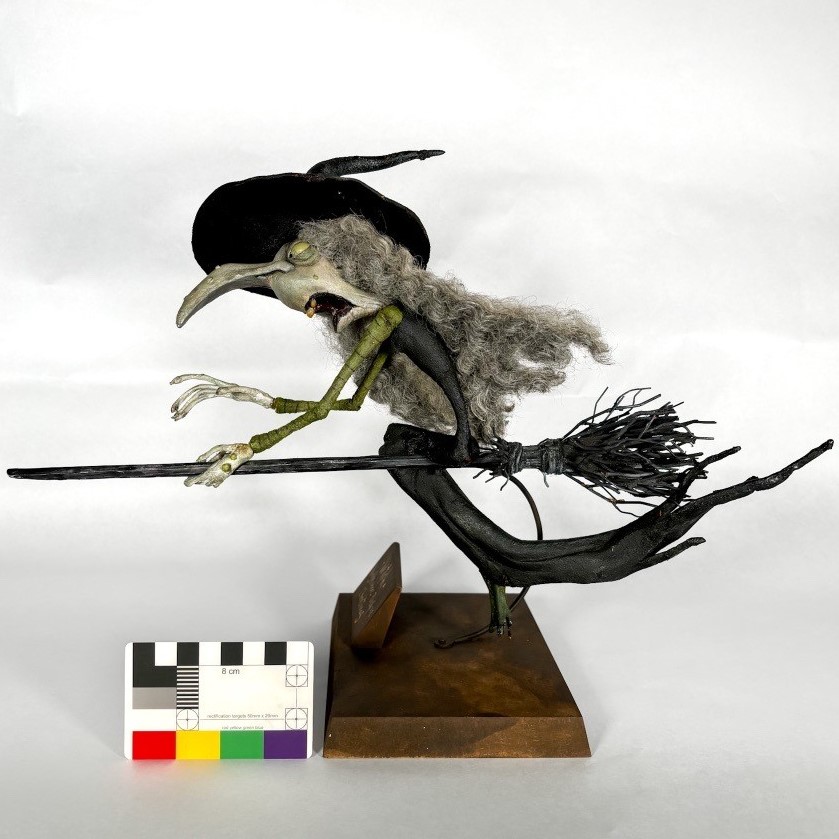As my 10-month placement comes to an end as a student conservator in the Conservation Team at the Science and Industry Museum, I have been reflecting on some of the highlights of my time here. From gallery installations to interventive object conservation, I have participated in a variety of work, which has enabled me to understand the wider scope of a conservator in the museum environment.
Throughout my placement I have had the opportunity to work on a number of objects in the Science Museum Group Collection, some of which have gone on display in the Revolution Manchester gallery, such as the Twin Cotton Mills model. Looking back on some of the interventive work I’ve undertaken, a stop-motion puppet from The Nightmare Before Christmas by Tim Burton has to be my personal favorite.
This puppet is moved by hand ever so slightly frame by frame to create a fluid animation scene. The metal armature inside the puppet enables its mobility with joints that allow for the movement of the limbs, head, and decorations.
Before finalizing the character concept, puppet fabricators create a maquette, a type of prototype to test the design and mobility. You can distinguish these from on-set puppets by the plinth on which the character is mounted.
This puppet was crafted by Paul Berry, principal animator on The Nightmare Before Christmas. Berry developed his expert craftsmanship in stop-motion animation at Manchester-based animation studio, Cosgrove Hall Films. While at Cosgrove, Berry worked on the cult classic The Wind in the Willows. The success of which paved the way for Berry to become the supervising animator and director of animation for The Sandman, James and The Giant Peach, and The Nightmare Before Christmas.

The puppet of ‘Big Witch’ was a new challenge for me as it was the first time I had worked on an object composed of modern plastic – in this case polyurethane. It’s a tricky material to conserve. Over time, as it degrades, polyurethane foam can harden, become friable or crack, it can even weep or become discolored. To address these issues, the conservation team proposed to consolidate the foam before gap-filling any losses on the puppet in order to stabilise the object for continued long-term storage.
Consolidation involves coating the object with an adhesive to strengthen its material structure. To do this, I needed to create a very fine mist to penetrate the foam structure. Nebulizers are more commonly used in medicine but can also be adapted for conserving objects as they enable the spray application of adhesive mixtures. It was the first time I had used a nebulizer in this way. While the equipment itself is straightforward to use, it took a few tests to identify the right concentration for the aerosol to spray.

I was grateful for the advice from other Science Museum Group conservators when it came to gap-filling where the foam had degraded. They shared suggestions on the materials they found effective for such polyurethane fills.
In the end I used a paste composed of Japanese tissue and an adhesive to fill areas of loss in the posterior section. Japanese tissue is a translucent, acid-free paper composed of long fibers which made it the ideal material: it is discrete while providing added support. The adhesive was very effective in sticking to the surface of the foam so we also used it in other areas, such as to re-adhere parts that had detached, including the tip of the witch’s hat.
Once the fills had set, we used acrylic paints to match them to their surrounding areas. This part of the conservation process is always my favourite as it relies heavily on colour theory, which is the relationship between colours. By using colour theory, one can make a variety of shades from the simple primary colours!

Now that the puppet is stabilised and returned to its former glory, it will be placed in a new storage location away from light, which is the leading cause of plastic degradation, which will prevent further photo oxidation of the foam. The new storage measures should enhance the object’s long-term preservation for people to enjoy for decades to come.